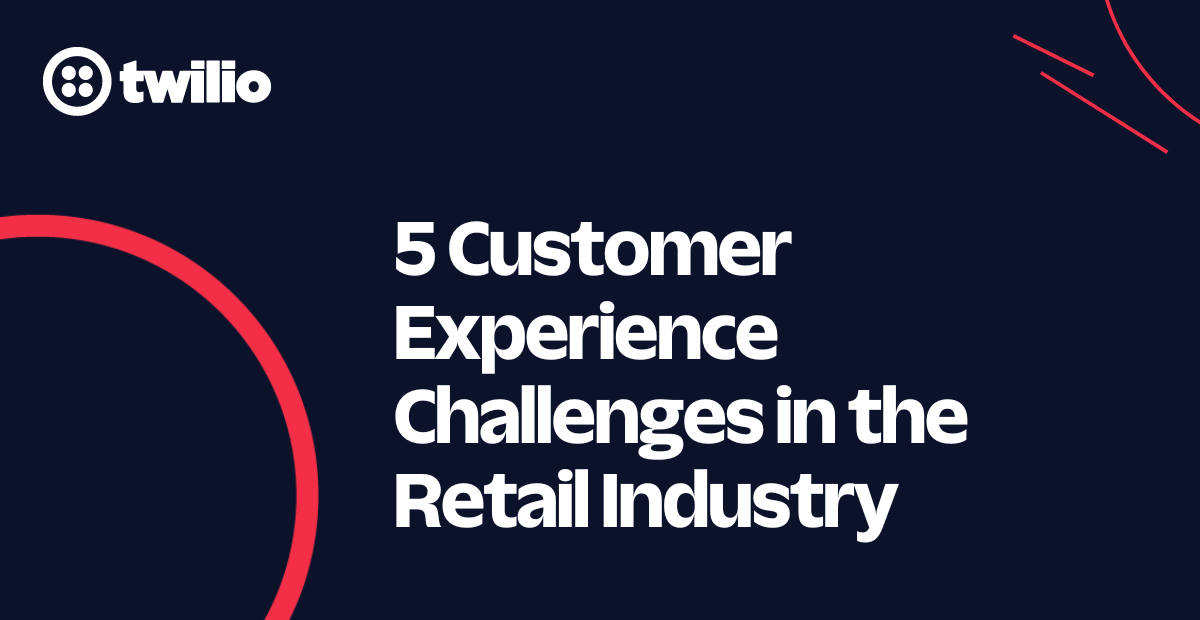5 Customer Experience Challenges in the Retail Industry
Time to read: 4 minutes

Have you ever said, “I’m never buying from this company again,” after a disappointing customer support experience?
You’re not alone: 56% of customers report they’ll stop doing business with a brand after a frustrating experience.
In other words, customer experience can determine whether customers remain loyal to your brand or turn to a competitor. And as the retail industry evolves, new challenges emerge that can get in the way of businesses providing a positive experience.
However, with each challenge comes an opportunity to adapt your engagement strategies and provide a better retail customer experience.
In this post, we’ll discuss the top 5 challenges in the industry and how to improve the customer experience in retail.
1. Meeting customers’ desire for seamless experiences
While many industries today are almost completely digital, retail remains firmly planted in online and in-person worlds. So one of the main retail challenges is creating seamless engagement no matter where you interact with customers.
Businesses can meet this challenge by investing in digital channels to enhance the customer experience. For example, a virtual shopping assistant on your website or app can help customers find the right product, like an in-store experience with an associate’s help.
This type of digital experience has a big impact on revenue: our 2023 State of Customer Engagement Report found that investment in digital customer engagement helped businesses increase revenue by 90% on average.
However, adding new digital channels can present another challenge: siloed channels that lead to disconnected customer experiences.
That’s why it’s vital to create omnichannel engagement where data flows between platforms. This gives customer-facing employees access to the necessary customer data and context to create a consistent experience, whether a digital customer service interaction or in-person shopping.
2. Activating customer data for effective personalization
Customers today expect personalized experiences.
This is true across generations, but it’s especially crucial for younger shoppers: 75% of Gen Z customers report they’ll quit a brand that doesn’t personalize experiences.
But it can be challenging to keep up with personalization as it evolves quickly. One of the biggest changes is that third-party cookies—which data-collecting companies use to gather customer data and sell it to businesses—will go away soon.
This means businesses must gather quality first-party data, or the data provided directly from customers’ interactions with your business, to personalize engagement.
The great news is this data is ideal for personalization: two-thirds of consumers want brands to only use first-party data to personalize engagement.
Then, the next challenge is unifying customer data across channels and sources to create complete customer profiles with behaviors, preferences, and predictive attributes. A customer data platform can help you achieve this by connecting with all your data sources and helping you create customer segments for highly personalized outreach.
3. Delivering on data privacy
When customers give businesses their data, they want a couple of things in return: personalization and data privacy.
In fact, 98% of consumers want brands to take additional measures to guarantee data privacy and transparency around data usage. Luckily, there are measures businesses can take to assure customers’ privacy.
First, follow regulations like the General Data Protection Regulation and the California Consumer Privacy Act, which protect consumers’ rights around data privacy.
Additionally, use secure authentication methods to verify customer identity without friction. This goes a long way in generating trust: 83% of consumers say they trust brands more after verifying and authenticating their identity.
4. Driving customer loyalty
Customer loyalty is vital to business success. On average, 65% of a company’s business comes from existing customers.
However, retaining customers has become more challenging in recent years. In the U.S., 57% of Gen Z consumers report having less customer loyalty than before the COVID-19 pandemic. So businesses must refine customer retention strategies to boost loyalty and drive revenue.
One way to do that is by improving personalization, as we discussed earlier. This pays off, as 86% of consumers admit personalized experiences increase their brand loyalty.
Another effective way to encourage customers to stick with your brand (and reward those who do so) is through loyalty programs. But make sure these provide real value to the customer because 75% of consumers are willing to switch brands for a better loyalty program.
Discover more ways to boost customer retention and loyalty, like optimizing your onboarding flow and reengaging inactive customers, in our post Customer Retention: Definition, Metrics and 8 Strategies to Improve It.
5. Measuring the ROI of customer experience
It can be challenging to communicate the value of customer experience when you don’t have the metrics to calculate return on investment (ROI).
The first obstacle in measuring customer experience ROI is unifying metrics from various sources. Customer experience encompasses every touchpoint in the customer journey, and you must gather data from various platforms and channels to get a full picture.
Once you identify all the necessary data points—like customer service metrics and social media sentiment—create a dashboard or report that gives you a comprehensive view.
This will give you a better understanding of your customers’ preferences and needs and uncover where you can make improvements to the customer experience.
Improve your retail customer experience with Twilio Flex
To improve customer experience, businesses must consider the entire customer journey to ensure customers get consistent engagement from start to finish.
A flexible contact center platform like Twilio Flex is vital to achieving this because it allows you to create seamless engagement throughout the customer journey.
Flex enables you to scale and modernize your contact center as needed, adding new channels that work alongside your existing systems. Plus, it allows you to create a single user interface where contact center agents can access customer data from all channels. This empowers your business to create a consistent, positive customer experience.
Want to see how real businesses optimize engagement? Check out how 2 retailers improved the customer experience by creating a connected customer journey in our post How Can Retailers Create a Better Customer Journey?
Related Posts
Related Resources
Twilio Docs
From APIs to SDKs to sample apps
API reference documentation, SDKs, helper libraries, quickstarts, and tutorials for your language and platform.
Resource Center
The latest ebooks, industry reports, and webinars
Learn from customer engagement experts to improve your own communication.
Ahoy
Twilio's developer community hub
Best practices, code samples, and inspiration to build communications and digital engagement experiences.


